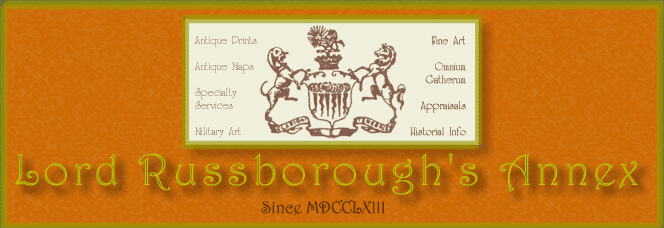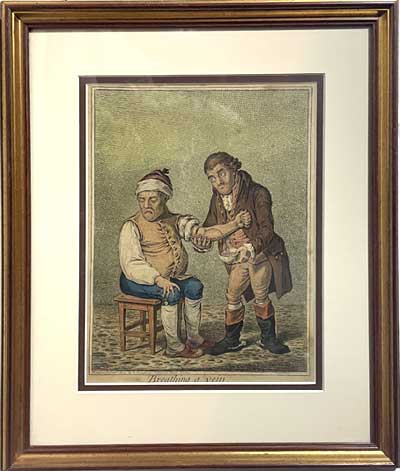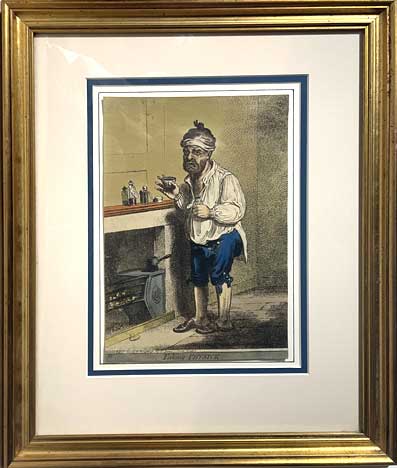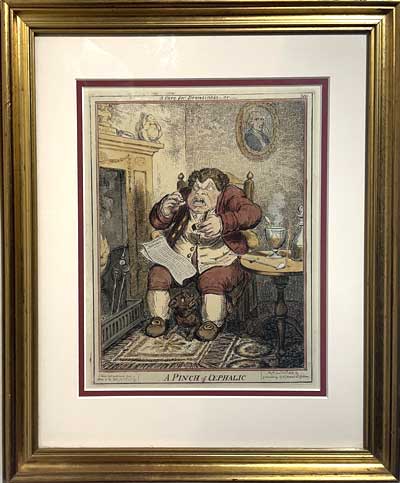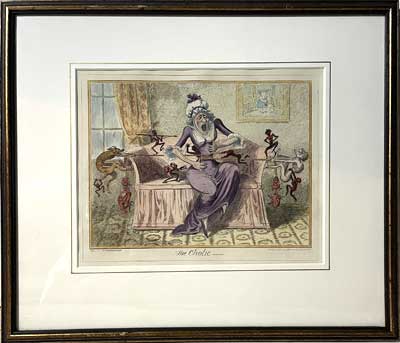
THE CHOLIC
George Cruikshank
1792 -1878
Hand tinted etching. Published by Thos Mclean 20 Haymarket London Aug.1st 1835
Museum matted, gilt line, glazed, gilt-wood frame. 7¾ x 9 7/8” Frame 14 x 16 1/2”
Ref. JH4(203)/DVL/ s.anaa> RLN SOLD PRICE CODE B
A woman suffering the pain of cholic; illustrated by demons tugging on a rope wound around her stomach. On the wall hangs a picture of an interior with a disreputable-looking woman drinking.
Coloured etching after G. Cruikshank after Captain F. Marryat. Lettering contains the anchor pictogram denoting attribution to Captain Marryat.and was first published in 1819
George Cruikshank (1792-1878) was an English artist, caricaturist and illustrator.
In 1811 Cruikshank gained fame with a series of political caricatures he created for the periodical The scourge, a monthly expositor of imposture and folly. Cruikshank published political cartoons including a successful series of pamphlets created with William Hone, until 1825 and began illustrating books in 1820. He is thought to have illustrated over 850 books for adults and children, including works by Dickens, Ainsworth, Thackeray, and the Grimm brothers. His work, wrote one reviewer of a biography of Cruikshank, "recorded, commented on, and satirized his times to such an extent that they have frequently been used to represent the age." He is considered by some to be one of the best humorists that Britain ever produced. Cruikshank was influenced by English political cartoonist, James Gillray and Cruikshank finished several of Gillray’s pieces that were left unfinished at the time of his death in 1815.
